Travel and carbon footprint: understanding our HomeExchange community’s travel emissions
We know that tourism has an impact on the planet; it’s responsible for 8% of global greenhouse gas emissions*. But at HomeExchange, we refuse to stand by and do nothing. For several years, we have been convinced that as a tourism company, it is our responsibility to act in order to reduce this number while still allowing people to travel and disconnect from everyday life.
How is that possible? It’s largely thanks to you!
Launching an impact study to understand our community's travel habits
Since 2020, we've been calculating the company's carbon footprint to take action on that front, but we wanted to take it a step further by also looking at our members' footprints. Hence, we decided to launch a study to better understand the overall carbon impact of the HomeExchange community.
How did we conduct this study?

We did it thanks to your help! Since June 2022, after each exchange, we have been sending you a short questionnaire about your modes of transportation, and at the end of 2022, more than 10,000 of you answered the questionnaire about your exchange travel habits which make up the main sources of carbon emissions when traveling.
In partnership with OuiAct, a consulting firm specializing in climate strategy, we analyzed the results of these questionnaires using ADEME data to identify key areas for reducing the carbon footprint of all of us as HomeExchange travelers and to define a concrete action plan for the company to achieve this.
Read the reportThe results of the impact study
We have summarized the main findings of this study into five main categories:
- Transportation: the main modes of transportation for the HomeExchange community are planes (45%) and cars (44%): transportation (means and distance) is therefore the main way to reduce the community's carbon impact.
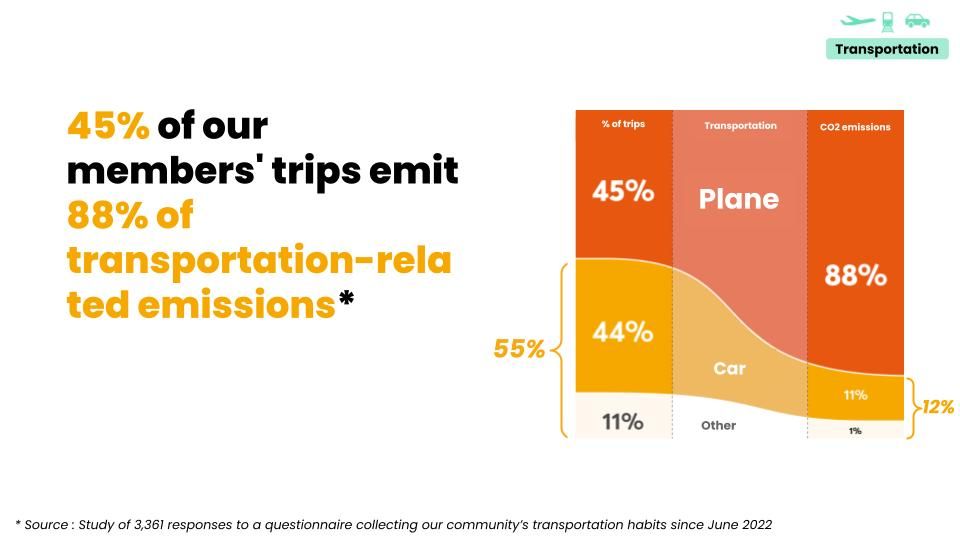
- Accommodation: choosing a home exchange is 49% less carbon intensive than staying in a hotel or vacation club.
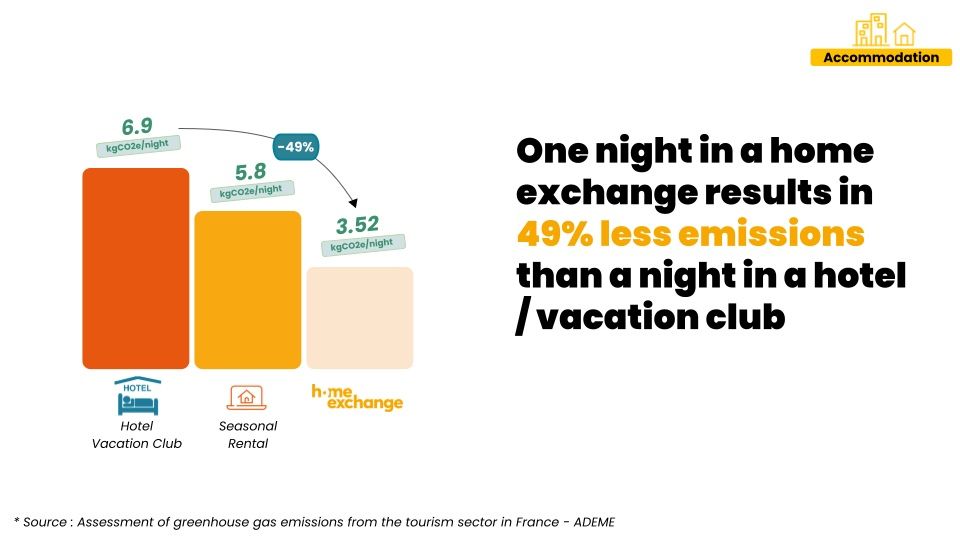
- Activities: tourism activities are the second most important measure for reducing emissions during a trip and can account for up to 62% of the total footprint.
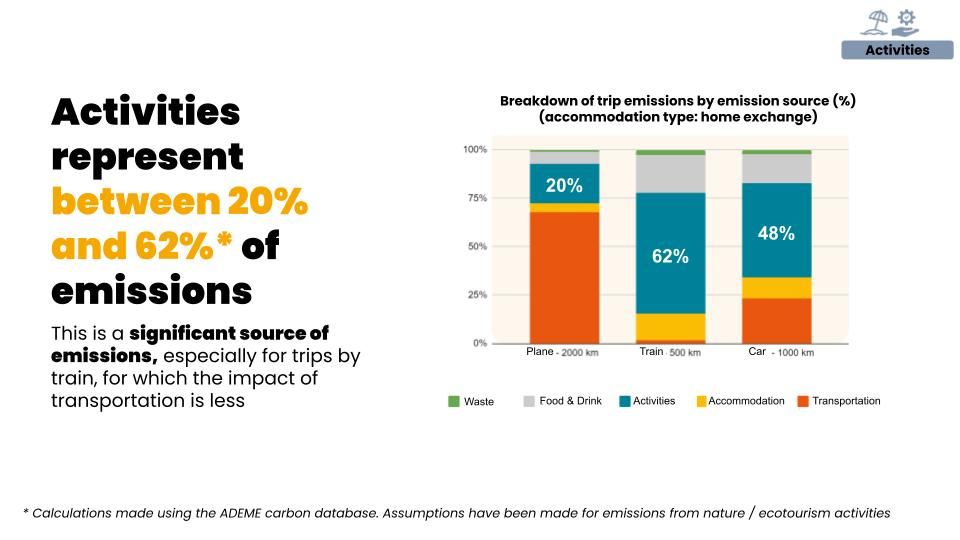
- Food: Food practices and waste have a relatively small impact on the total carbon footprint, but can contribute significantly to a traveler's individual carbon footprint, particularly when a low-carbon mode of transportation has been chosen such as by train.
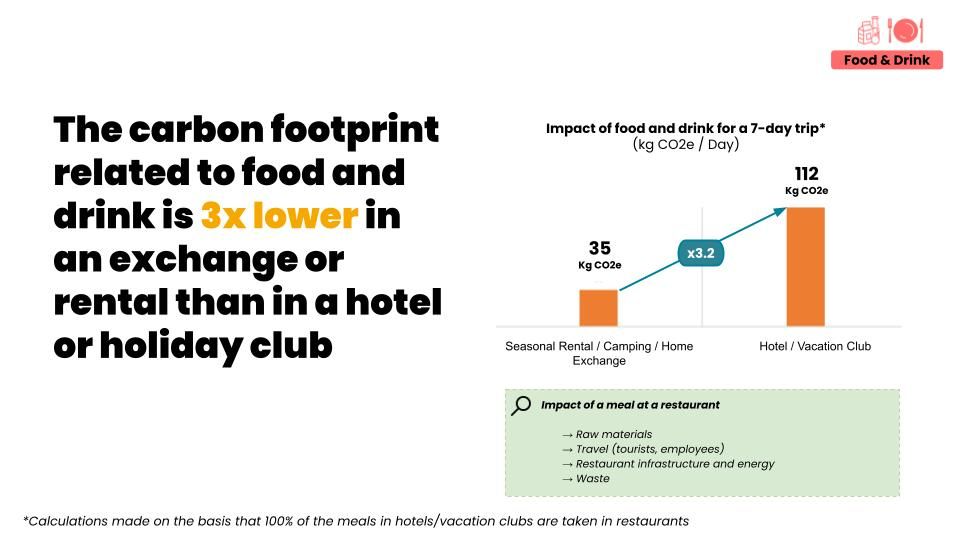
- Waste: HomeExchangers are particularly sensitive to waste management which, although small in the overall carbon footprint, remains a key issue for biodiversity!
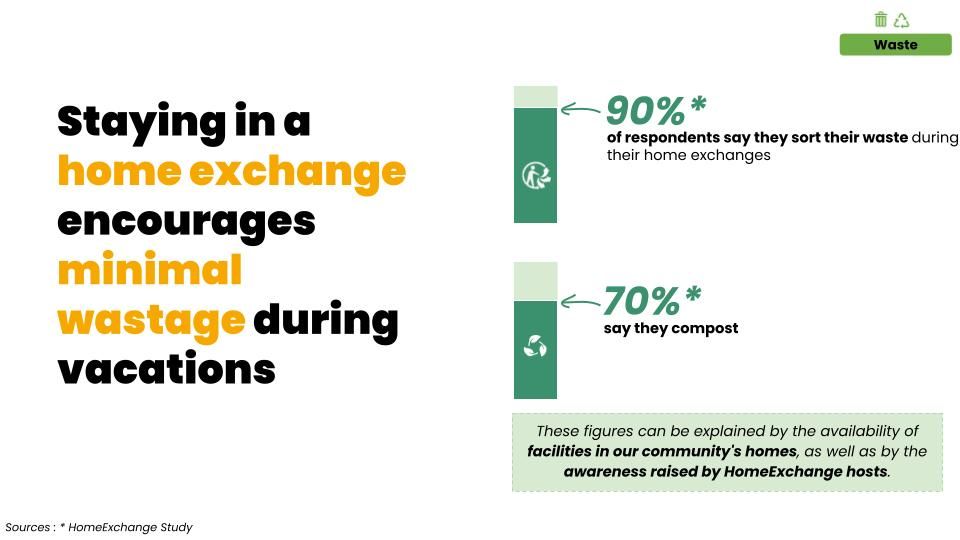
What next? Working together for the future of tourism

Do you have other ideas or suggestions? Share them with us so we can share them with the whole community!
Share my ideasOur commitments as a company
Home exchanging is a low-carbon accommodation choice compared to other options, but it is not the only way to travel sustainably!
To make sustainable travel desirable and act on the carbon footprint of both our company and our community, we are committed to:
- Putting forward more and more local destinations or those accessible by train, and to show the infinite possibilities of getting away from it all without going to the other side of the world.
- Encouraging our members to highlight low-carbon activities near them, and ban the most CO2 emitting activities from our recommendations.
- Promote environmentally friendly food practices: meet-free, local and seasonal products.
This study is just the beginning! If more and more tourism stakeholders engage in similar initiatives, more data will be available to complete our analysis and identify the best ways to reduce our collective carbon footprint.
Do you want to rethink tourism with us, to reinvent our way of traveling together? Commit to becoming a responsible traveler by signing our pledge!
Go to the pledge* survey of 160 countries published in 2018 in the scientific journal Nature Climate Change
